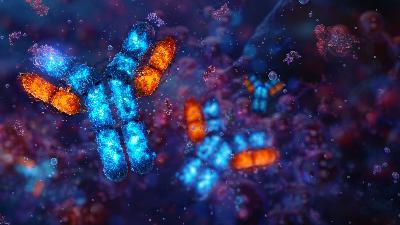Can the Polyface Approach Feed the World?
Update: 2025-10-10
Description
By Joel Salatin at Brownstone dot org.
By far the most common question people ask me is, "Can the Polyface approach feed the world?"
Yet another big op-ed piece in the New York Times on Sept 28 took this position to marginalize non-chemical agriculture, using the oft-quoted idea that we would need three times as much farmland to produce the food the world needs if we quit using glyphosate and chemical fertilizer.
Let's take a walk into history and see where this kind of "scientific studies show" originated.
When Mason Carbaugh was Virginia Agriculture Commissioner more than 30 years ago, he issued a "state of the Commonwealth's Agriculture" each year. I'll never forget opening it and reading his dire predictions about what would happen if we went to organic farming. Half the world would starve; organic farmers needed to pick which half they wanted to starve.
This was long before the government organic certification program, but the rumblings toward non-chemical approaches were already rattling the establishment narrative. They had to nip this rebellious notion in the bud.
I didn't cotton to being called a starvation advocate.
Do you know how it makes you feel to be told your methodology would kill half the planet? Think on that for a bit. I began sleuthing the studies the commissioner cited to come to his conclusions. Here is the pinnacle of scientific modeling at Virginia Tech, Virginia's esteemed land grant university.
They decided to do a comparison of chemical versus organic production. The college had many test plots for studying things. These were all fairly small 10 ft. X 12 ft. type plots. Imagine a couple of football fields partitioned off into little plots to study pesticides, herbicides, various chemical concoctions, seed germination, and plant varieties.
In other words, these plots, for years, received all sorts of chemical cocktails along with tillage, herbicides-you get the picture. The soil was dead. The plots were certainly not part of a larger ecologically functional system. These plots epitomized a linear reductionist, segregated, and mechanistic paradigm toward biology.
Scientists identified a handful of plots to grow conventional chemical corn and an adjacent handful to grow the same hybrid corn organically. The chemical plots received the full complement of fertilizer, pesticides, and herbicides. The organic plots received nothing. No compost. No foliar fish emulsion. And the corn was the same hybrids bred for chemical uptake, not open-pollinated varieties known for resilience in low-input systems.
You can imagine the outcome.
The chemical plots grew beautifully and yielded bumper crop equivalents.
The organic plots were weedy, poorly formed, and yielded a fraction of the others.
Based on this "sound science" the university and agriculture writers like our current friend at the New York Times have disparaged non-chemical agriculture with credentialed authority.
These types of studies were repeated at other land grant universities throughout the 1980s as the nascent organic food movement gained traction.
Anyone who knows a scintilla about non-chemical agriculture understands that biological soil is part of a larger system. The soil is a living community of some 4.5 billion organisms per handful. Today, only 10 percent of them are named. The rest are unnamed, and we don't even know what they do. We're still that ignorant about soil.
Interestingly, in just the last couple of years, agronomists who appreciate this living community have identified something called a quorum.
Until now, agronomists thought all the microorganisms in the soil competed with each other. After all, a cursory look at nature seems to validate the notion of competition. Pigs compete for the trough. Cows compete for clover. Chickens compete for grasshoppers.
But what we're now learning is that when the soil comes into balance, the various microscopic beings form a synergistic quorum and begin helping each other.
They become complementa...
By far the most common question people ask me is, "Can the Polyface approach feed the world?"
Yet another big op-ed piece in the New York Times on Sept 28 took this position to marginalize non-chemical agriculture, using the oft-quoted idea that we would need three times as much farmland to produce the food the world needs if we quit using glyphosate and chemical fertilizer.
Let's take a walk into history and see where this kind of "scientific studies show" originated.
When Mason Carbaugh was Virginia Agriculture Commissioner more than 30 years ago, he issued a "state of the Commonwealth's Agriculture" each year. I'll never forget opening it and reading his dire predictions about what would happen if we went to organic farming. Half the world would starve; organic farmers needed to pick which half they wanted to starve.
This was long before the government organic certification program, but the rumblings toward non-chemical approaches were already rattling the establishment narrative. They had to nip this rebellious notion in the bud.
I didn't cotton to being called a starvation advocate.
Do you know how it makes you feel to be told your methodology would kill half the planet? Think on that for a bit. I began sleuthing the studies the commissioner cited to come to his conclusions. Here is the pinnacle of scientific modeling at Virginia Tech, Virginia's esteemed land grant university.
They decided to do a comparison of chemical versus organic production. The college had many test plots for studying things. These were all fairly small 10 ft. X 12 ft. type plots. Imagine a couple of football fields partitioned off into little plots to study pesticides, herbicides, various chemical concoctions, seed germination, and plant varieties.
In other words, these plots, for years, received all sorts of chemical cocktails along with tillage, herbicides-you get the picture. The soil was dead. The plots were certainly not part of a larger ecologically functional system. These plots epitomized a linear reductionist, segregated, and mechanistic paradigm toward biology.
Scientists identified a handful of plots to grow conventional chemical corn and an adjacent handful to grow the same hybrid corn organically. The chemical plots received the full complement of fertilizer, pesticides, and herbicides. The organic plots received nothing. No compost. No foliar fish emulsion. And the corn was the same hybrids bred for chemical uptake, not open-pollinated varieties known for resilience in low-input systems.
You can imagine the outcome.
The chemical plots grew beautifully and yielded bumper crop equivalents.
The organic plots were weedy, poorly formed, and yielded a fraction of the others.
Based on this "sound science" the university and agriculture writers like our current friend at the New York Times have disparaged non-chemical agriculture with credentialed authority.
These types of studies were repeated at other land grant universities throughout the 1980s as the nascent organic food movement gained traction.
Anyone who knows a scintilla about non-chemical agriculture understands that biological soil is part of a larger system. The soil is a living community of some 4.5 billion organisms per handful. Today, only 10 percent of them are named. The rest are unnamed, and we don't even know what they do. We're still that ignorant about soil.
Interestingly, in just the last couple of years, agronomists who appreciate this living community have identified something called a quorum.
Until now, agronomists thought all the microorganisms in the soil competed with each other. After all, a cursory look at nature seems to validate the notion of competition. Pigs compete for the trough. Cows compete for clover. Chickens compete for grasshoppers.
But what we're now learning is that when the soil comes into balance, the various microscopic beings form a synergistic quorum and begin helping each other.
They become complementa...
Comments
In Channel























